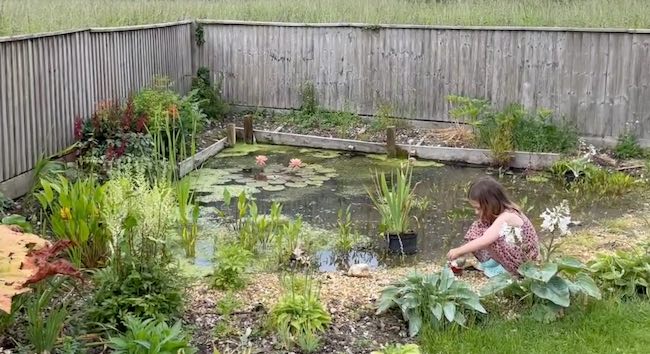
A Focus on Dragonflies, Water Boatman Insects, and Water Snails
A wildlife pond isn’t just an attractive addition to your garden; it can also play a crucial role in conserving local biodiversity. For any green-fingered nature lover, attracting dragonflies, water boatman insects, and water snails – whilst providing a haven for many more creatures – can be incredibly rewarding.
In this article, we’ll delve into the elements of creating a wildlife pond that caters to these specific creatures and offer guidance on choosing plants like water soldiers, which provide an additional beneficial habitat.
Planning and Designing Your Wildlife Pond
Building a wildlife pond can be an exciting project. Start by choosing an open, sunny location where plants and animals will thrive, ideally away from trees to prevent leaf litter from contaminating the water. The pond size depends on your garden space, but a minimum of 1 square metre is a good starting point.
The pond should have various depths: a shallow area for wildlife to enter and exit the water, and a deeper part (at least 2 feet) to prevent the pond from freezing solid during winter. Keep the pond’s edges gently sloping to allow creatures easy access in and out.
Ensure that your pond is lined with a suitable pond liner to retain water. To naturalize the liner, cover it with a layer of sand and then place a layer of clean topsoil for planting. It’s important to let the soil and the water settle for a few days before introducing any plants or wildlife.
Dragonflies and Damselflies
To attract dragonflies and their relatives, the damselflies, make sure you provide them with an appropriate environment for their larval (nymph) stages. Both dragonflies and damselflies spend the majority of their life as nymphs underwater, so maintaining a clean, unpolluted pond is crucial.
Add some flat rocks or logs near the water’s edge. Adult dragonflies like to bask in the sun, and these provide ideal spots. It’s also beneficial to include emergent vegetation, like reeds and rushes, as they use these to crawl out of the water when they are ready to metamorphose into adults.
Water Boatman Insects
Water boatman insects are excellent swimmers, using their oar-like legs to propel themselves through the water, where they hunt other small invertebrates. A water boatman can breathe underwater by trapping a bubble of air under its wings, an impressive feat that makes them fascinating to observe.
They need a pond with a variety of water depths, as they lay their eggs on underwater plants in both shallow and deep water. So, having plenty of aquatic plants will help to attract these insects to your pond.
Water Snails
There are numerous species of water snails that can live in garden ponds. These small creatures play a significant role in the pond ecosystem, feeding on algae and decomposing matter, thereby helping to keep the water clean.
Water snails can climb, so having a mix of submerged, floating, and marginal plants will provide plenty of surfaces for them to explore. They also need calcium to build their shells, so if your local water is very soft, you may need to add crushed eggshells or a calcium supplement to their water.
The Role of Water Soldier plants in your pond
Water soldier (Stratiotes aloides) is a beneficial plant for wildlife ponds. This perennial aquatic plant floats just below the surface in summer and sinks to the bottom in winter, a cycle that helps to oxygenate the water and make it more habitable for aquatic creatures. Its submerged and floating leaves provide habitats for insects like dragonfly nymphs and water boatmen, and the small white flowers that bloom in





















